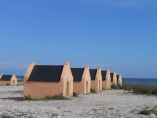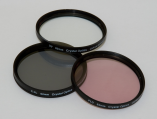Level of surfing
Beginner
Quality of surf
Average
Call code
599
Net code
an
Area
800
Coastline
364 km
Climate
Tropical; moderated by northeast trade winds
Hazards
Very Isolated, Difficult Access
Best Months
September - December
Population
183000
Currency
Netherlands Antillean Guilden (ANG) Netherlands Antillean guilders per US dollar - 1.79 (2006)
Time Zone
(UTC-4)
Special Requirements
Private Beaches
surfing

Former Slave Huts, Bonaire, Netherlands Antilles; 2006
The Caribbean, she is a harsh mistress. All of the islands in the Greater and Lesser Antilles share at least some aspect towards the North Atlantic and therefore are exposed to any passing fronts that generate of the East American Coast and transit the North Atlantic. These fronts often pass a good way to the north and swell decay can be a problem.
Regular windswell is a constant on the east coast of all of the island groups and hence there is almost always something to keep you occupied and off the rum for a few hours. too much wind can be a bad thing though and onshore days are very common, no matter how early in the morning you manage to peel yourself out of your cot and stumble down to the beach.
The third source of swell in the region are from passing hurricanes. Some of the strongest storm ever recorded on the planet file through here regularly. Technically the season spans June to November with early September being the peak. The ideal scenario is for the hurricane mass to pass clear of any inhabited areas and sit well offshore in the deep Carribean for a few days prior to disipating. The result is typically 3-5 days of western swell that lights up the hidden western points and reefs of the Caribbean. The persistant NE/E trade winds will gently fan these breaks all day long. It is then that some of the rarer points and breaks of Netherlands Antilles come to life. Surf exploration doesent get any better than this.
what to pack

Rich Niewiroski Jr.: 62 mm ultra-violet, fluorescent, and polarizing lens filters. Camera used was a Canon 400D; April 9, 2007
Trainers, loose clothing - everything for the hot weather. Definitely take along some bug repellent spray, good sunscreen and sunglasses! Better take your medicines with you (esp. anti histamine tablets), as the brands can be unfamiliar and cost more.
Beach clothing & sandals will be useful if you are going in the warm season. Try to choose classics, and items that you can mix and match. Have at least one set of nicer clothing for more formal occasions.
Bring lots of memory for your camera and lots of battery, oh! and take a good protection for your camera from the sand.





